Instructional Series
This site will be closing soon as its content has moved to Tāhūrangi.
2024 titles are available on Tāhūrangi. Use the filters to find specific series.
Find Literacy resources at Tāhūrangi - Literacy.
Welcome to the English medium literacy instructional series teaching and learning resources for years 1 to 8.
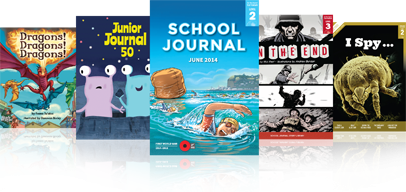
- Gold
- Purple
- 2
- 4
- 3
- 1
- 3
- 6
- 8
- 4
- 5
- 1
- 7
- English
- Technology
- Science
- Mathematics and Statistics
- Social Sciences
- The Arts
- Health and Physical Education
- Non-fiction
- Fiction
- None
- Nature of technology
- Statistics
- Nature of science
- Geometry and Measurement
- Technological knowledge
- Living world
- Physical world
- Number and Algebra
- Technological practice
- Material world
- Planet Earth and beyond
- Engage with science
- Interpret representations
- Articles
- Stories
- Plays
Search results
55 items - Showing 21 - 30
-
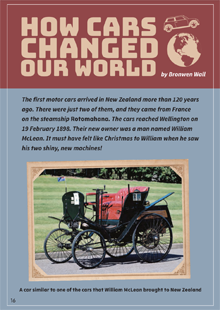
How Cars Changed the World
by Bronwen Wall, illustrations by Scott Pearson
-

-
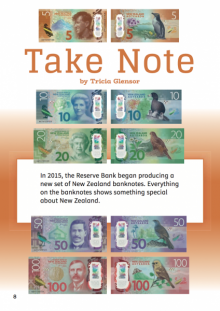
Take Note
by Tricia Glensor
This article provides information about the images on New Zealand banknotes, using the $5 note as an example. It provides opportunities for students to think critically about what makes the images special to New Zealanders.
Gold 1
-
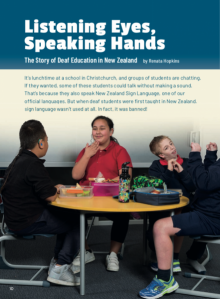
Listening Eyes, Speaking Hands: The Story of Deaf Education in New Zealand
by Renata Hopkins
This article explores how attitudes to deafness have changed over time. The article includes a social history of the van Asch Deaf Education centre, which opened in 1880.
-
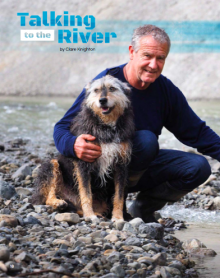
Talking to the River
by Clare Knighton
“Talking to the River” tells the story of a farmer and a group of engineering and computing students from Victoria University of Wellington who collaborate to gather data about river pollution and publicise it. River pollution is a topical issue, and “Talking to the River” provides an example of people dedicated to making a difference. The article explains the impact cows can have on rivers and the importance of being able to accurately measure levels of river pollution. The university students overcome several challenges to create a prototype monitoring device that is fit for purpose. The reach of the project is extended exponentially by creating an app that tracks river improvements and allows users to upload photos to a website.
-
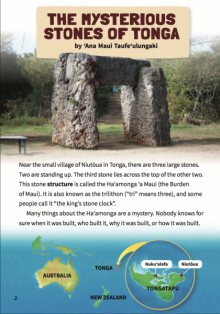
The Mysterious Stones of Tonga
by 'Ana Maui Taufe'ulungaki
illustrated by Scott Pearson
In this article, Dr ‘Ana Maui Taufe‘ulungaki describes and discusses an unusual stone monument, Ha‘amonga ‘a Maui (the Burden of Maui), which stands near the village of Niutōua in Tonga. The monument is special because there are very few stone structures to be found anywhere in the Pacific.
-
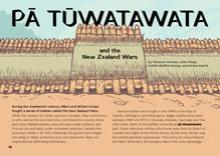
Pā Tūwatawata and the New Zealand Wars
This article describes the development of pā technology in the nineteenth century, as iwi and hapū defended themselves and their land against invasion. It explains how the basic features of pā technology were adapted in response to invasion by Pākehā – utilising the rich knowledge Māori held about their land.
-
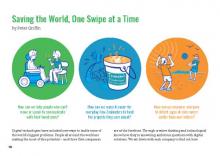
Saving the World, One Swipe at a Time
This article describes how three Kiwi companies have used digital technology to help solve health or social problems. It demonstrates how digital technologists think through a problem and how a seemingly abstract issue can be turned into a series of tasks that digital technologies can solve.
-
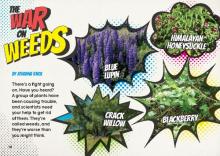
The War on Weeds
Students at Kaniere School are helping scientists combat the spread of weeds. They’re using simple digital technology to identify the weeds and upload the information to a national database. The article shows how students can use digital technology to become citizen scientists and act locally on a national issue.
-

Magic in the Wind
by Bronwen Wall
“Magic in the Wind” briefly describes some of the technological challenges faced by Len Lye in designing a successful wind wand. Together this article and "Greig's Pointed Problem" provide the basis for a comparison between technology and art.







 Literacy Online home
Literacy Online home
